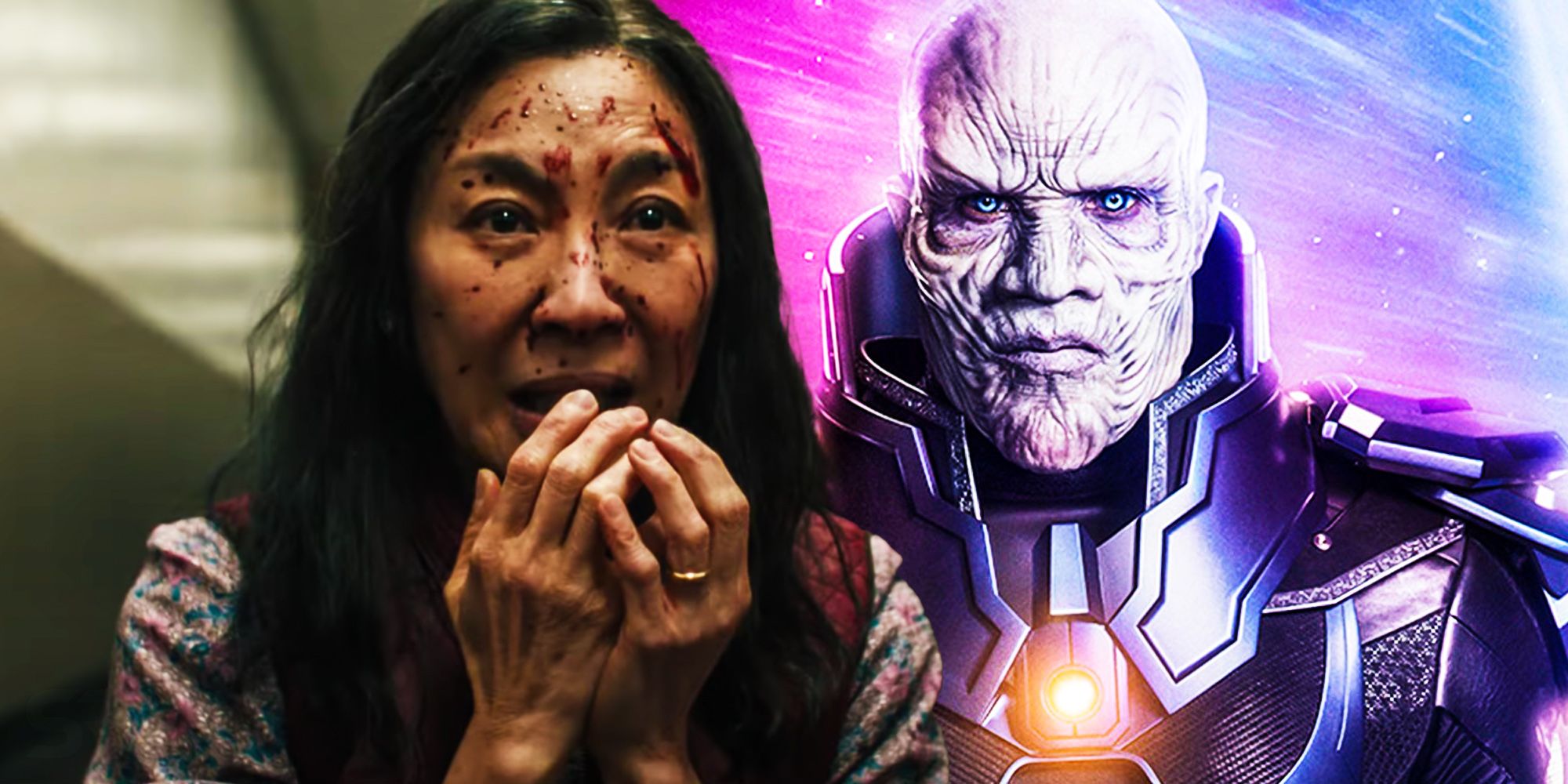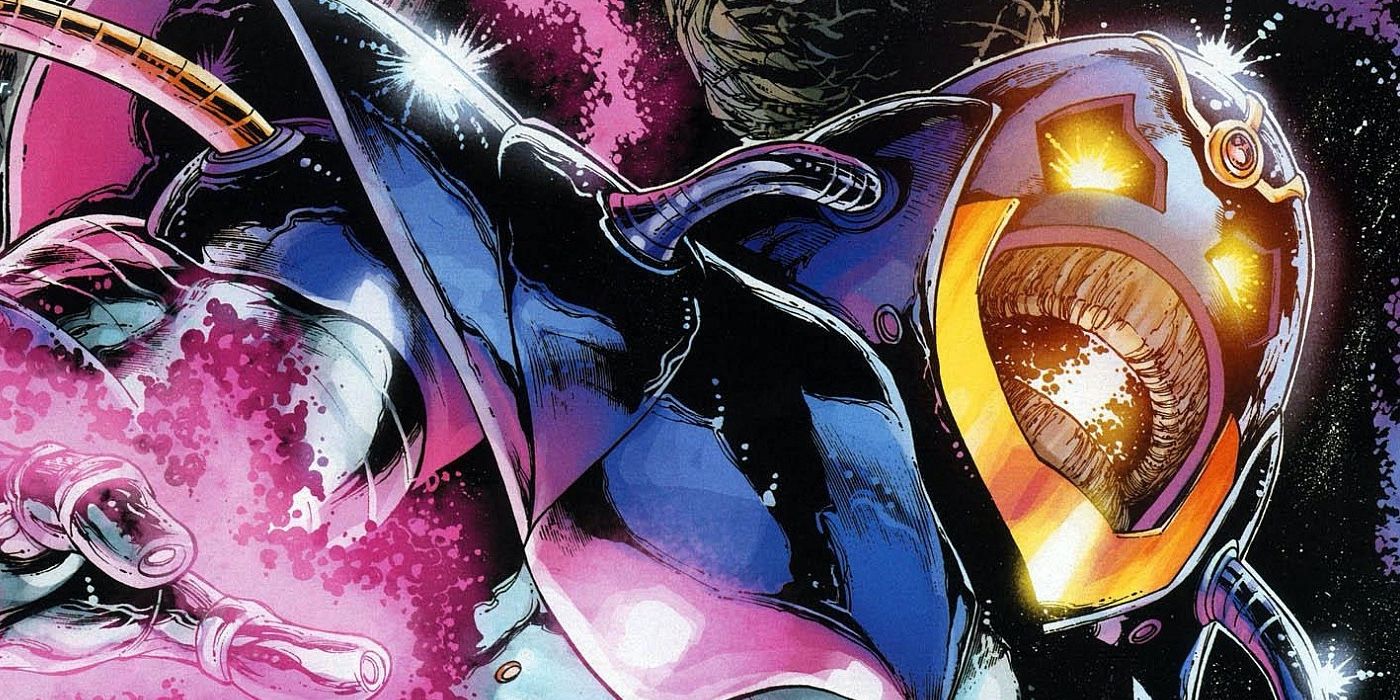Warning: This post contains spoilers for Everything Everywhere All At Once.
Everything Everywhere All At Once is an almost perfect multiverse story on its own merits but it also improves DCs best multiverse storyline. The concept of the multiverse has begun to break into mainstream movies over the past few years, beginning with Spider-Man: Into the Spider-verse, and is now a major storyline in the MCU. But the multiverse has been a point of reference in comics for decades and Everything Everywhere All At Once has some noticeable similarities to a very prominent DC comic series.
Directed by Dan Kwan and Daniel Scheinert, who also directed the incredibly weird Swiss Army Man, Everything Everywhere All At Once focuses on Asian immigrant Evelyn Wang (Michelle Yeoh) who finds out that there are an infinite amount of universes. She has to learn how to use the knowledge of many of her multiversal incarnations in order to fight against the Jobu Tupacki (Stephanie Hsu), an evil version of her daughter from a different universe. The fate of all universes are at stake and Evelyn has to make tough decisions between saving the multiverse and saving her daughter.
The widely acclaimed film doesn’t feature any superheroes but it has several other similarities to DCs Crisis on Infinite Earths storyline. The crossover comic was a major hit for DC and has been adapted for the small screen using the same name in the CWs Arrowverse. The DCEU also seems to be heading towards a multiversal storyline, likely owing to the popularity of the run of Crisis on Infinite Earths comics in 1985. Everything Everywhere All At Once follows the same basic story as those comics, but adds its own improvements.
Crisis on Infinite Earths’ main villain is Anti-Monitor, an evil version of the Monitor character, who eventually begins to destroy some of the existing universes before going back in time to prevent the creation of the multiverse. The Jobu Tupacki from Everything Everywhere All At Once mirrors the Anti-Monitor, as she decides to destroy the multiverse after gaining the ability to experience all the universes simultaneously. The difference between the two is that while the Anti-Monitor simply seeks power over the multiverse, the Jobu Tupacki is actually seeking to destroy herself because her existence in all universes has made her feel as if none of it matters. The Jobu Tupacki’s motivation adds some philosophical depth to the multiverse story popularized by Crisis on Infinite Earths.
The resolution to the stories are also similar; in the 12-issue DC comic series, a group of heroes brings together a few of the parallel earths in order to strengthen themselves against the Anti-Monitor. In Everything Everywhere All At Once, Evelyn draws on knowledge from parallel versions of herself to better fight her daughter. In the end, the story manages to be more specific and personal than that of Crisis on Infinite Earths, while managing to keep the emotional stakes just as high.
It’s unknown if directors Dan and Daniel meant to adapt the DC comics storyline or draw on some of its major elements. But their focus on a singular family unit brings a fresh and largely emotional punch to multiverse movies while major film franchises like the MCU struggle to maintain similar stories. Everything Everywhere All At Once has the same conceptual scope as stories like Crisis on Infinite Earths but stays fully grounded in the elements of humanity at its core.


